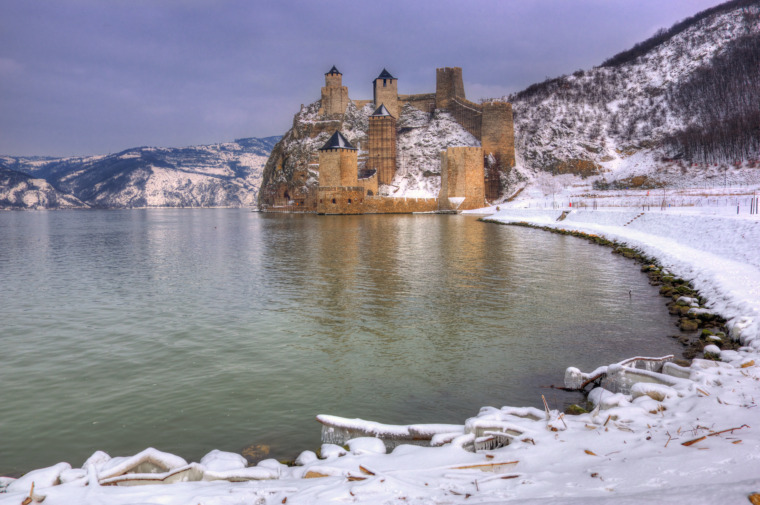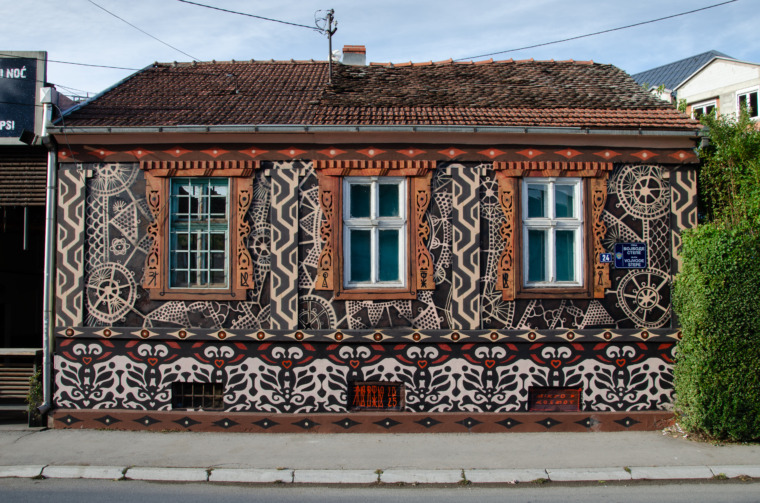

Located in the heart of Belgrade, just a few steps from the bustling Knez Mihailova Street, the Palace of Science has undergone an exceptional transformation, becoming a vibrant symbol of Serbia’s intellectual and cultural heritage. After a recent renovation, the building merges historical grandeur with modern innovations, offering visitors a dynamic space for education, research, and cultural discovery. Among the new attractions is the largest interactive globe in the region, which has become an unmissable point of interest for visitors of all ages.
A Rich History in a New Outfit
The Palace of Science, formerly known as the building of the Adriatic-Danube Bank, was constructed between 1924 under the design of German architect August Reinfels, with supervision by Serbian architect Ivan Belić. Located on King Milan Street, this building initially served as the headquarters of the Adriatic-Danube Bank and was owned by several banks and associations, including the aviation company Aeroput. The primary owner of the building was the Serbian Bank.
The renovation of the Palace of Science owes much to the vision and dedication of Miodrag Kostić, a well-known Serbian entrepreneur and philanthropist. Kostić’s investments in the building were crucial for preserving and modernizing this cultural gem. His commitment to science, education, and Serbian heritage reflects his broader philanthropic mission to promote intellectual growth and preserve culture in the country.



Kostić’s vision was clear: to transform the Palace of Science into a modern center of knowledge and innovation while preserving its rich historical and architectural roots. This allowed the building to become not just an exhibition space but also an interactive learning environment accessible to people of all ages. Thanks to his vision, the Palace of Science has become a symbol of Serbia’s growing scientific and cultural power.
Architectural Beauty and Modern Innovations
The Art Deco style of the building has been carefully preserved, with its characteristic granite facades and magnificent staircases evoking the elegance of past times. However, the addition of modern design elements, including digital displays and interactive technologies, ensures that the Palace of Science becomes a space where the past meets the future.
One of the most prominent features of the building is its central atrium, which has been reimagined with the latest lighting and augmented reality experiences. This synergy of classical architecture and futuristic enhancements has created an engaging and dynamic environment that invites visitors to explore in new and exciting ways.




New Attractions and Interactive Experiences In addition to fascinating exhibitions, the Palace of Science has introduced several new attractions that enrich the visitor experience:
- The Largest Interactive Globe in Europe
One of the most notable features of the renovation is the addition of the largest interactive globe in Europe. This immersive globe allows visitors to interact with geographical features, track global events, explore data on climate change, weather patterns, and natural resources. The globe is designed to captivate visitors of all ages, encouraging curiosity and learning in a fun way. - Scientific Café, Restaurant, and Bookstore
The Palace of Science is not only a place for learning but also a space for relaxation and socializing. The Scientific Café provides a comfortable space for visitors to discuss scientific topics over a cup of coffee, while the restaurant offers a modern gastronomic experience with a menu inspired by seasonal, local ingredients. The bookstore is a true haven for science lovers, offering a wide range of literature on various topics, including physics, astronomy, biology, and technology, as well as children’s books that encourage young minds to explore the wonders of science. - Planetarium
For those interested in space, the planetarium offers a starry experience. Using the latest technology, the planetarium offers immersive shows that explore the wonders of the universe, from the Solar System to distant galaxies. Visitors can enjoy educational programs that take them on a journey through the universe, allowing them to explore celestial bodies and phenomena in stunning detail. - Show Lab
Show Lab is another exciting addition, where visitors can discover innovations and achievements of scientific, research, and cultural-historical institutions that the Palace of Science collaborates with. This interactive space is designed for hands-on learning, providing opportunities for both children and adults to participate in thrilling scientific activities.
Exhibitions for All Ages: A Journey Through Science and Discovery The Palace of Science now offers a variety of exhibitions that cater to all ages, ensuring that both children and adults can find something they will enjoy and learn from:
- Interactive Exhibitions for Children
The renovated spaces feature interactive exhibitions that encourage young visitors to explore science in a fun and educational way. From learning about physics through interactive experiments to discovering the wonders of space exploration, these exhibits bring science to life for children. Live demonstrations and educational workshops further enhance the experience, ensuring that young minds stay engaged and inspired throughout the visit. - Exhibitions for Adults: From History to Innovation
For adult visitors, the Palace of Science offers a more sophisticated range of exhibitions. Explore the history of Serbia’s scientific contributions, including displays on the lives and achievements of Nikola Tesla, Mihajlo Pupin, and other notable figures. Contemporary exhibits on topics such as space exploration, technological innovations, and climate change provide insight into the future of science, helping visitors understand both the historical and future trajectory of scientific progress. - Temporary Exhibitions and Events
In addition to permanent exhibitions, the building regularly hosts temporary exhibitions and events on topics such as robotics, environmental sustainability, and the fusion of art and technology. Public lectures, academic conferences, and cultural events continue to be held, making the Palace of Science an active intellectual hub in Belgrade.
A Center for Innovation and Education More than just a museum, the Palace of Science has become a space for intellectual exchange and collaboration. The building has evolved into a leading venue for academic and scientific events, as well as a place where the latest technology and traditional heritage can be harmonized. Its mission is not only to preserve the past but also to educate and inspire future generations through interactive learning, lectures, and exhibitions.



Visitor Information: How to Visit the Palace of Science Located near Republic Square and the Kalemegdan Park, at Kralja Milana 11 Street, the Palace of Science is easily accessible on foot or by public transport.
Opening Hours:
- Tuesday to Friday: 10:00 AM – 6:00 PM
- Saturday and Sunday: 11:00 AM – 7:00 PM
- Closed on Mondays
Ticket Prices: Tickets are affordable, with discounts for students, children, and groups.
Accessibility: The building is fully accessible to all visitors, including those with disabilities.
Conclusion: A Must-Visit Destination for Science and Culture Enthusiasts The Palace of Science is not just a museum – it is a vibrant cultural and scientific hub that continues to evolve. Recent renovations have transformed it into an engaging and interactive space that offers educational opportunities and unique insights into Serbia’s rich history and future in science and culture. Whether you are a family looking for a fun and educational outing, a science enthusiast, or simply someone interested in Belgrade’s architectural and cultural heritage, the Palace of Science offers something for everyone.
As Belgrade continues to grow as a center of knowledge and innovation, the Palace of Science proudly stands as a testament to Serbia’s commitment to scientific discovery, education, and cultural heritage. Under the visionary leadership of Miodrag Kostić, this institution has become one of the region’s most important cultural and educational destinations. Whether you visit for its stunning exhibitions, cutting-edge interactive displays, or architectural beauty, a trip to the Palace of Science promises to be an enriching and unforgettable experience.
Related Articles


Tourist Holiday Guide to Serbia: Tips, Traditions & What to Expect
December 20, 2025
Čačak: Serbia’s Open-Air Gallery of Murals
December 19, 2025
Snow-Free Serbia Travel Ideas for 2026
December 17, 2025
What to Do with Kids in Serbia: Family-Friendly Holiday Ideas
December 14, 2025




